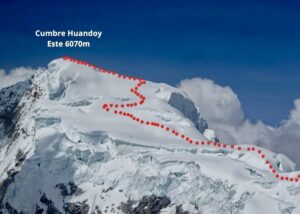On August 4-9, Marc Toralles, Bru Busom, and Ruben Sanmartin opened a difficult alpine-style route on 6,634m Yerupaja, Peru’s second-highest mountain. The Spaniards’ 3,000m line went up the east face and east ridge, and culminated in the first east-to-south traverse of the mountain. They then descended via the south ridge.
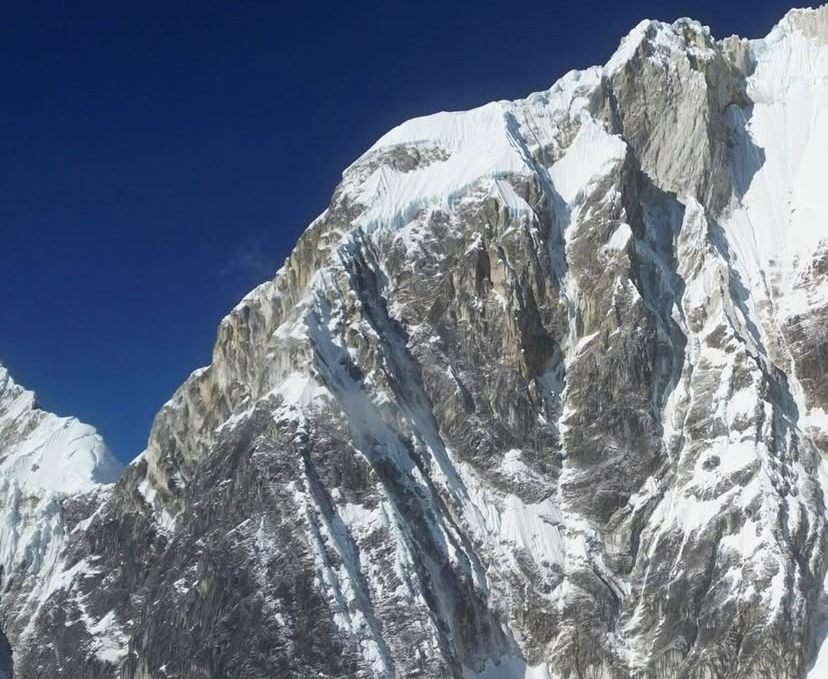
The sharp east ridge of Yerupaja. Photo: Marc Toralles
Toralles, Busom, and Sanmartin rated the climb as 6c+, M6+, and 95º. Starting on the east face, they navigated a steep limestone wall prone to falling rock and ice. After that, they reached the narrow and exposed east ridge bristling with those characteristic and unstable ice “mushrooms.”
No option for retreat
The ridge offered no escape and forced the team to commit fully to reaching the summit in order to descend safely. They spent four days battling poor visibility and precarious snow conditions. Their descent via the south ridge was equally demanding, requiring careful rappels through complex terrain. The team also summited a lower sub-summit, thus completing a traverse never before documented. They described this as their most committing climb, with survival hinging on reaching the top, due to the lack of options for retreat.
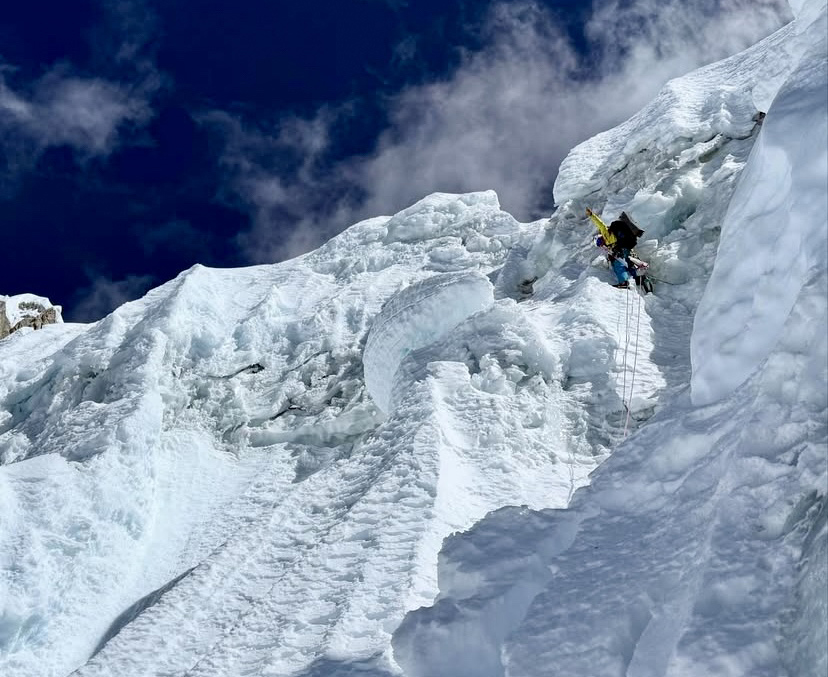
Climbing on Yerupaja. Photo: mplus_store/Instagram
Notable past ascents
Yerupaja is the highest peak in the Cordillera Huayhuash range, first surveyed in 1927 by the American Geographic Society expedition, according to the American Alpine Journal.
Yerupaja, nicknamed The Butcher for its sharp ridges and extreme difficulty, has a sparse but storied climbing history due to its remote access, dangerous glaciers, and technical demands. Despite its stature, it is one of the least climbed peaks in the Andes.
The first ascent of the mountain’s 6,334m main summit (Yerupaja Grande) occurred on August 3, 1950. David Harrah and James Maxwell of the Harvard Andean Expedition climbed via the southeast face to a col at about 5,944m. They then took the east ridge to the summit.
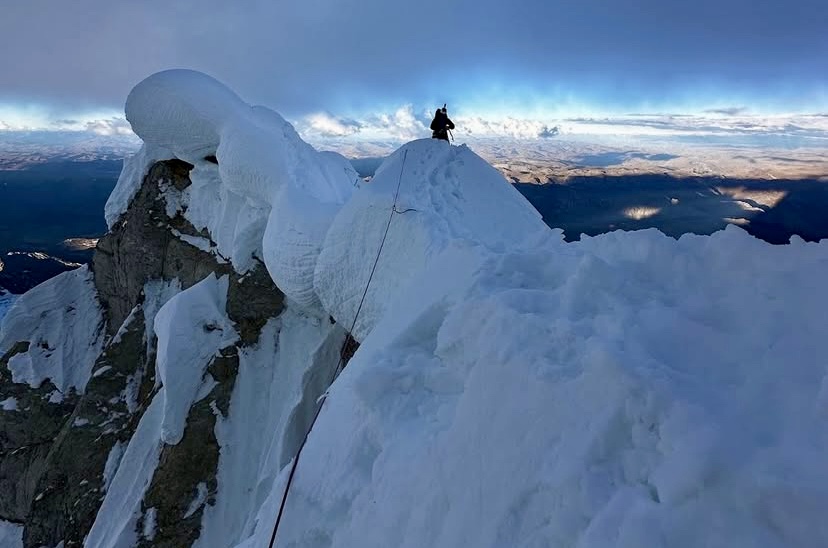
On the summit ridge of Yerupaja. Photo: Marc Toralles
Even earlier, a 1948 Austrian expedition led by Karl Schmidbauer failed to summit via the southwest face due to weather and route challenges.
In July 1957, Toni Egger and Siegfried Jungmeier climbed the east ridge to the top of 6,121m Yerupaja Chico, a sub-summit of the Yerupaja massif. Scottish teams in the 1960s, led by Malcolm Slesser, attempted the ridge, but the dangerous glacier approach repelled them.
On July 12, 1966, Leif Patterson and Jorge Peterek made Yeruapaja’s second ascent via a direct west face route, climbing steep ice over 13 days.
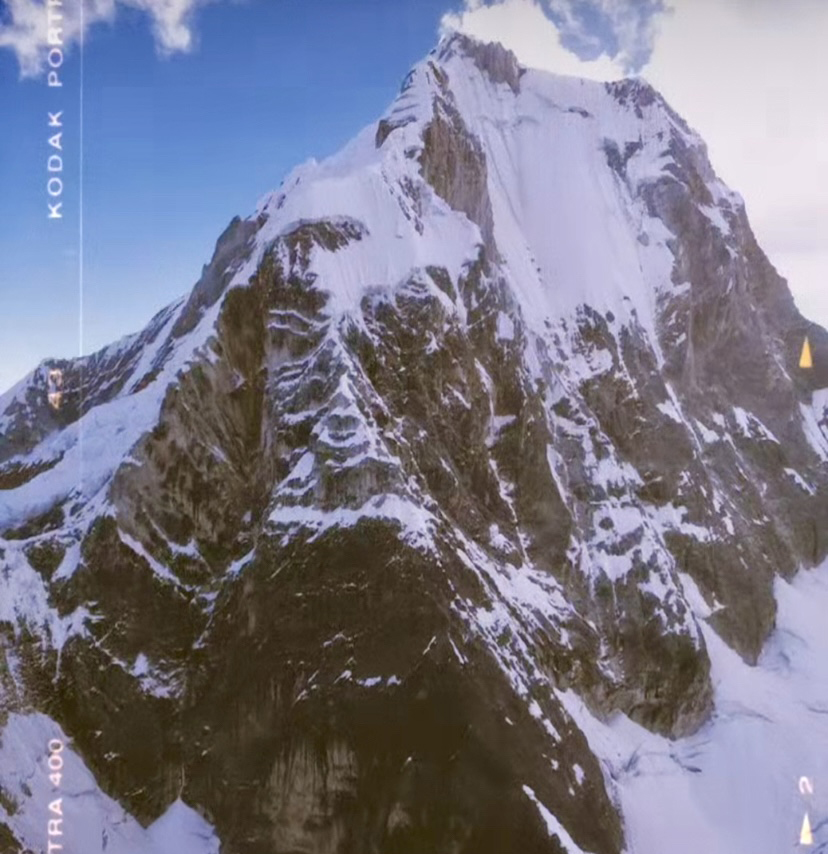
Yerupaja from the east. Photo: Marc Toralles
Northeast face
The northeast face was first climbed to the summit in July 1968 by two members of a British-American expedition, Chris Jones and Paul Dix, in alpine style, evading falling rock and ice.
On June 24, 1969, Egon Wurm and Sepp Majerl summited Yerupaja’s main summit via the east spur, a challenging route left of the northeast face. After summiting, they descended via the northeast face, bivouacked again on the face, and reached the base of the wall on June 25.
Wurm and Majerl were members of the Tyrolean Andean Expedition of the Austrian Alpine Club, Innsbruck branch, led by Otto Wiedmann. The team included Helmuth Wagner, Egon Wurm, Sepp Majerl, Reinhold Messner, Peter Habeler, Dr. Raimund Margreiter, and Otto Wiedmann.
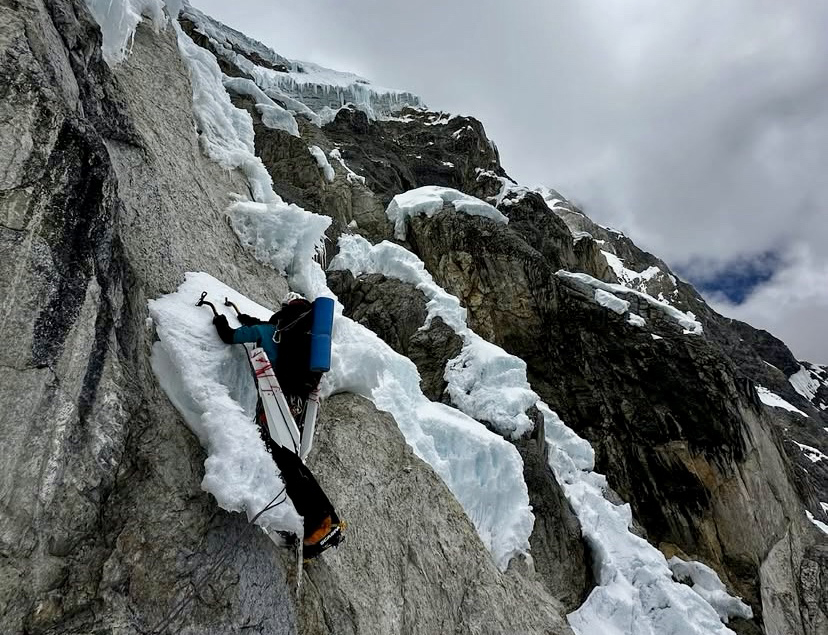
Photo: Marc Toralles
On July 4, 2001, Santiago Quintero of Ecuador carried out a bold solo ascent of the west face. It took him 17 hours from base camp-summit-base camp. His ascent was the last on Yerupaja’s main summit before Toralles, Busom, and Sanmartin’s success earlier this month.
In 2003, Slovenians Matevz Kramer, Tadej Zorman, and Matej Mejovsek opened a route on the northeast face but did not reach the summit. They turned around at 6,550m in a storm. In 2014, Nathan Heald and Luis Crispin reached the summit ridge via the west face but retreated due to dangerous conditions.
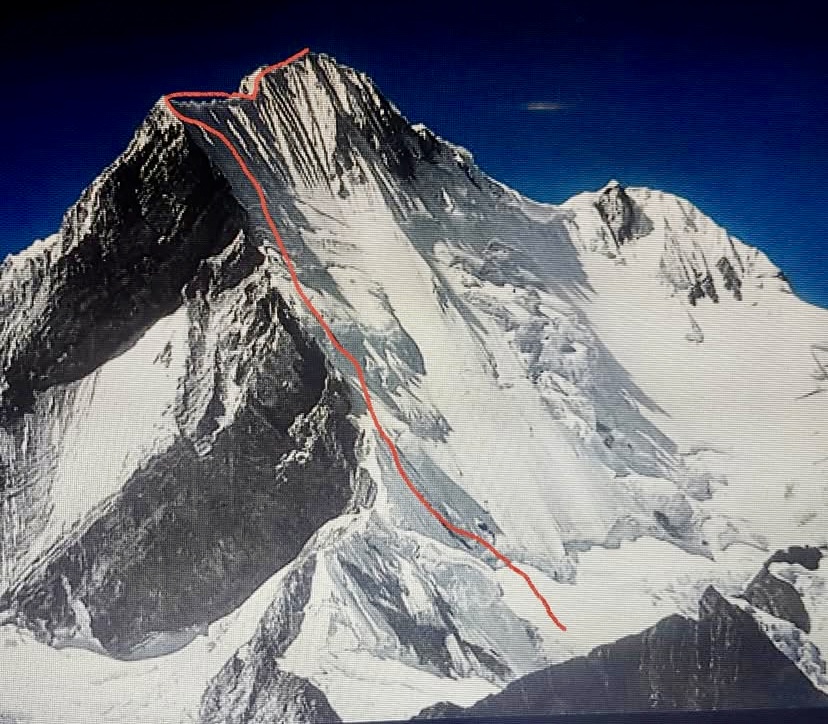
Santiago Quintero’s 2001 solo route on Yerupaja. Photo: Santiago Quintero
The 2025 ascent by Toralles, Busom, and Sanmartin stands out for linking the east face and ridge to the summit, thus completing a full traverse. But despite exceptional climbs like this one, Yerupaja remains one of the Andes’ most challenging peaks.
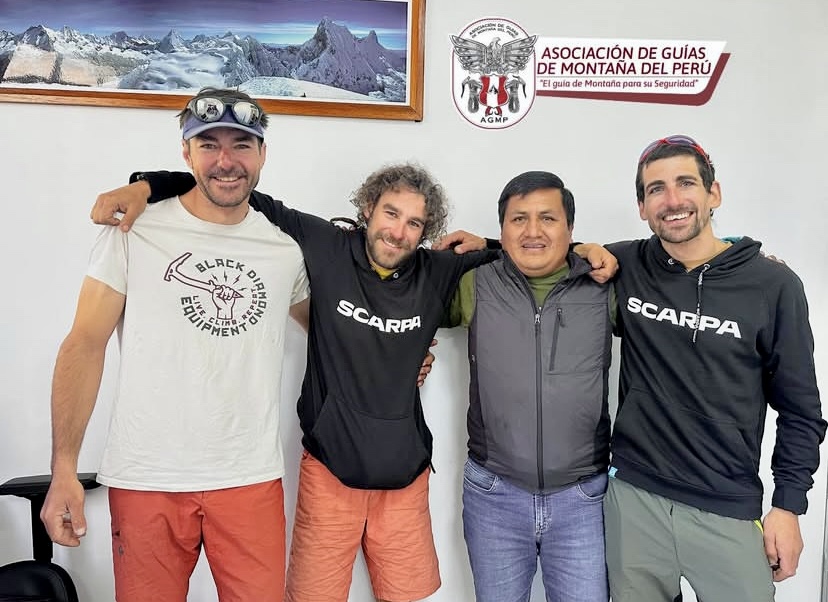
Left to right, Marc Toralles, Bru Busom, Beto Pinto Toledo (president of the AGMP, Peru’s Association of Mountain Guides), and Ruben Sanmartin. Photo: AGMP/Instagram






